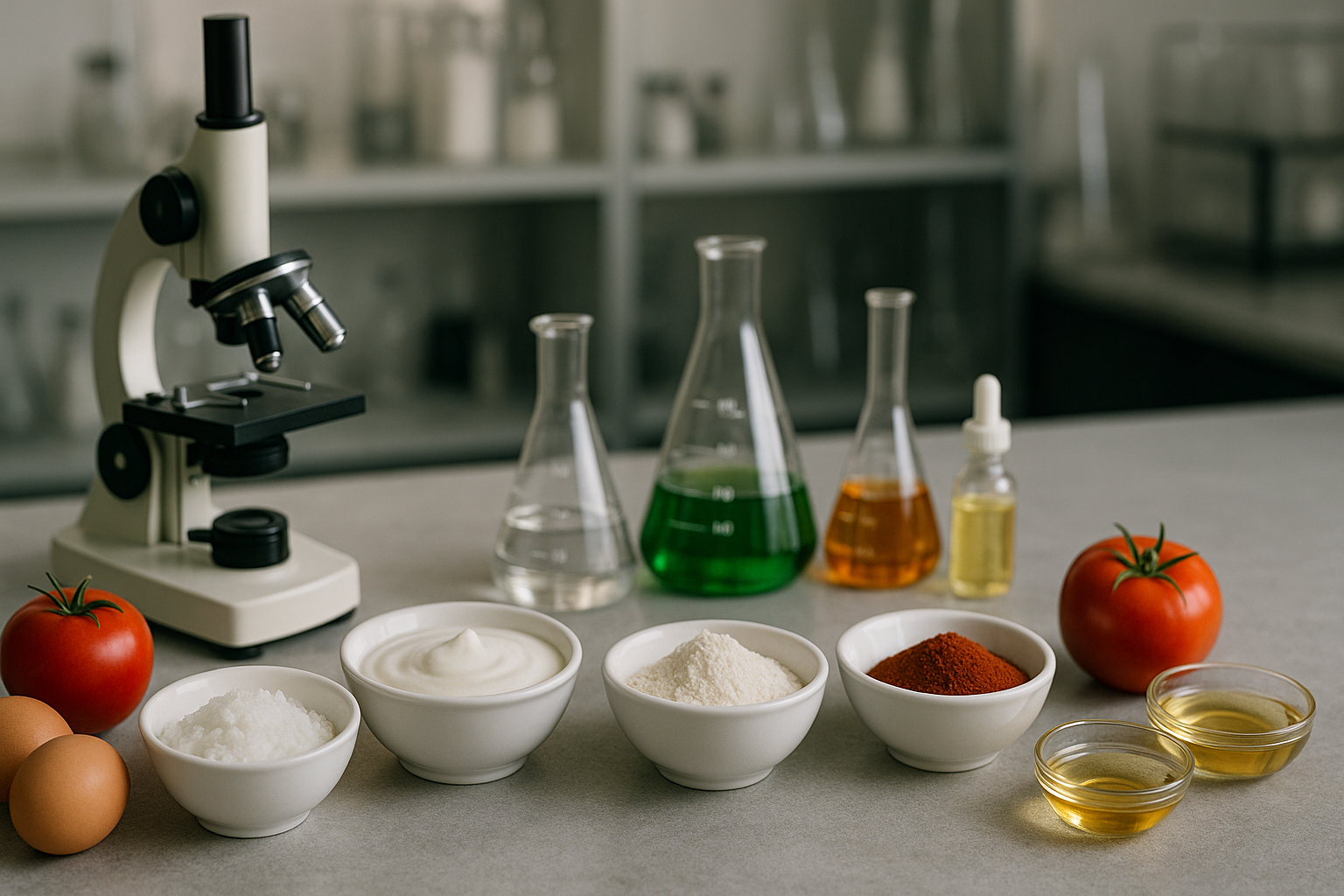Trending searches
Trending searches

Hydrocolloid: Chitosan
SUBSCRIBE TO OUR BLOG
Promotions, new products, and recipes.
Chitosan: The Biopolymer Derived from Chitin with Biomedical Potential
Chitosan, a linear polysaccharide derived from chitin, has gained significant attention for its biocompatibility, biodegradability, and antimicrobial properties. But what's the science behind this hydrocolloid, and how is it utilized in various domains?
Historical Context
Chitosan's history is intertwined with chitin, one of the most abundant natural polymers, primarily found in the exoskeletons of crustaceans. The potential of chitosan as a versatile biopolymer was recognized in the 20th century, leading to its diverse applications.
The Molecular Science of Chitosan
Chitosan is produced by the deacetylation of chitin. It consists of glucosamine and N-acetylglucosamine units. Its positive charge allows it to bind with negatively charged substances, making it a valuable agent in various applications.
Production and Refinement
Chitosan is derived from chitin through an alkaline deacetylation process. The resulting polymer is then purified and processed into various forms, including flakes, powder, and beads.
A Multifaceted Ingredient
Chitosan's unique properties have led to its use in several sectors:
- Biomedicine: Used in wound healing, drug delivery, and tissue engineering.
- Food Industry: Acts as a fat replacer, antimicrobial agent, and food preservative.
- Water Treatment: Employed for its ability to remove contaminants and heavy metals.
Chitosan in Culinary Creations - Proportions
While its primary applications are outside the culinary world, Chitosan does find some niche uses:
-
Dietary Supplements:
- Proportion: Varies based on the formulation.
- Purpose: Touted for its potential weight loss benefits.
-
Food Preservation:
- Proportion: 0.5% to 2% of the total weight.
- Purpose: Extends shelf life by inhibiting microbial growth.
Conclusion
Chitosan, with its biocompatible and versatile nature, has emerged as a valuable biopolymer in various fields. Its potential in biomedicine and environmental applications, in particular, underscores its significance in addressing contemporary challenges.
For further reading: Microcrystalline Cellulose
References:
- Rinaudo, M. "Chitin and chitosan: Properties and applications." Progress in Polymer Science, 2006.
- Kumar, M.N.V.R. "A review of chitin and chitosan applications." Reactive and Functional Polymers, 2000.


|
About the Author Ed is the founder of Cape Crystal Brands, editor of the Beginner’s Guide to Hydrocolloids, and a passionate advocate for making food science accessible to all. Discover premium ingredients, expert resources, and free formulation tools at capecrystalbrands.com/tools. — Ed |
Related Posts

Citric Acid The Solution to Common Lemon Water Mistakes People Make

Can Saffron Improve Mood and Libido? A Natural Approach to Wellness

The Most Powerful Food Science Questions Journalists Are Asking Today
Enjoyed this post? Subscribe to The Crystal Scoop
Food-science tips, ingredient know-how, and recipes. No spam—unsubscribe anytime.
- Choosing a selection results in a full page refresh.
POLICY PAGES
QUICK LINKS
Guar Gum
Cape Crystal Brands, 18 Bank St., Suite 1, Summit NJ 07901.
- Phone: +1 908-273-5600
- Email: info@capecrystalbrands.com
- Tax ID: 26-2477626000
- FDA Facility Registration # 16980627550
- Kosher Certified: OKosher.org
Country/region
© 2025, Cape Crystal Brands | Sitemap
